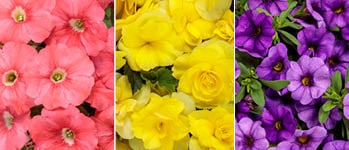Gardening Advice: Winter Annuals
Q: We have just moved from Baltimore to this land of mild winters. I’ve been told I can plant seeds for annuals right now — instead of waiting until spring — to get flowers early next year. What kinds should I try? — Rachel Bittner, San Diego, Calif.
A: You’re going to have great fun with winter annuals in your new climate — I’m jealous. Not only can you grow many old favorites from a fall sowing, but also you can try all sorts of new things. Topping my list are four California natives: clarkia, phacelia, nemophila, and California poppy (Eschscholzia californica). All resent transplanting and are best grown from seed sown in place (they are key components of many western “wildflower” seed mixes sold today). For splashes of saturated color, plant each variety in a separate patch; to make a naturalistic blend of heights and hues, mix seeds of different varieties and scatter them. They’ll grow happily through the cooler months and start blooming at winter’s end. Gardeners anywhere in hardiness zones 9 and 10 can grow this foursome best from a fall sowing.
Some cottage-garden stalwarts also do very well if they are planted this month. Bachelor’s-buttons, larkspur, sweet alyssum, and calendula will all thrive and begin flowering well before winter is over. (Even at my place in Pennsylvania, in zone 6, these bloom best in spring when I scatter seed in early autumn.) October is also the time to sow seed for sweet peas, snapdragons, stocks, Chinese forget-me-nots (Cynoglossum amabile), toadflax (linaria), and just about any kind of annual poppy, if you want to see flowers by late winter or early spring. In fact, you can have “spring” color right now. Local nurseries should be full of transplants of sweet alyssum, calendula, snapdragons, stocks, pansies, violas, schizanthus, and cineraria. (You may also see primroses that are nearly in bloom; they can be used as annuals in regions with mild winters and hot summers.) These plants will give color throughout fall and winter. I’d also try freesias, De Caen–type anemones, and ranunculus. But those are bulbs — and that’s another story.





